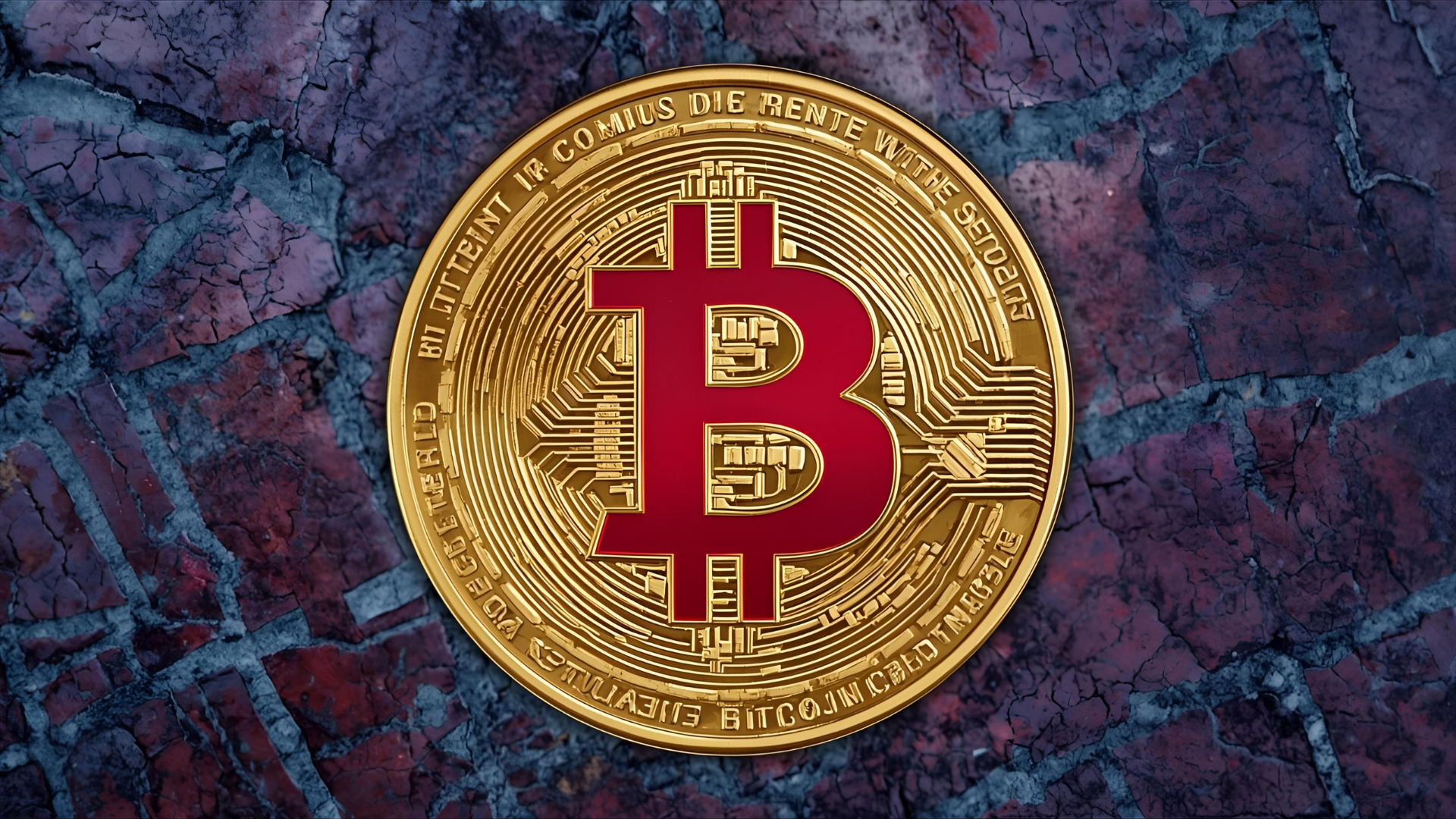
$14B Bitcoin Seized in US-UK Scam Crackdown
Authorities in the US and UK seize $14 billion in Bitcoin from alleged scammers in a major crypto fraud investigation shaking global markets.
In an unprecedented move that has sent shockwaves through the global cryptocurrency market, authorities from the United States and the United Kingdom have reportedly seized Bitcoin Seized in US $14 billion as part of a massive crackdown on an international fraud network. The operation, which spans multiple jurisdictions, marks one of the largest crypto seizures in history and underscores growing concerns about crypto-related crimes, money laundering, and the misuse of digital assets for illicit purposes.
The joint investigation, which involved close coordination between law enforcement agencies, cybercrime units, and financial regulators, aims to dismantle a sophisticated web of alleged scammers and crypto fraudsters who used digital currencies to hide proceeds from criminal activities. As the probe unfolds, questions are mounting about how such large amounts of Bitcoin could remain hidden for so long. What the seizure means for the future of cryptocurrency regulation. This article delves into the details of the $14 billion Bitcoin seizure, explores its implications. The crypto industry and analyzes the evolving dynamics of law enforcement in the digital asset era.
The Massive $14 Billion Bitcoin Seizure: What Happened?
The joint US-UK crypto enforcement operation was initiated after months of intelligence gathering on a series of suspicious wallet addresses linked to international scam networks. According to official statements, law enforcement traced thousands of Bitcoin transactions through blockchain analytics, eventually uncovering a network of fraudulent investment schemes and dark web operations spanning continents.
Authorities believe that the seized Bitcoin (BTC) originated from various online scams, including phishing attacks, investment fraud, and Ponzi-style schemes that targeted unsuspecting investors worldwide. By using crypto mixers, privacy wallets, and decentralized exchanges, the scammers allegedly laundered billions of dollars’ worth of Bitcoin over several years.
Officials from both the US Department of Justice (DOJ) and the UK’s National Crime Agency (NCA) confirmed that the seized funds were transferred to government-controlled wallets pending further investigation and court proceedings. The value of the confiscated Bitcoin—approximately $14 billion—represents one of the largest recoveries of digital assets in history, surpassing even previous landmark cases involving Silk Road and Bitfinex-related seizures.
A Landmark Case in the Fight Against Crypto Crime

The significance of this case cannot be overstated. It highlights not only the growing sophistication of cybercriminals but also the evolving capability of global law enforcement to track and recover stolen digital assets. For years, Bitcoin was believed to offer anonymity to users, allowing criminals to move funds without detection. However, advancements in blockchain forensics and data analytics tools have changed that narrative.
By leveraging powerful blockchain-tracing software and collaborating with private-sector experts. Authorities were able to follow the digital money trail through a maze of pseudonymous wallet addresses. This case serves as a powerful reminder that, while Bitcoin transactions are encrypted and pseudonymous. They are also transparent and traceable — a paradox that law enforcement is increasingly exploiting.
The $14 billion Bitcoin seizure marks a milestone in global efforts to enforce accountability in the crypto space. It demonstrates how coordinated operations between multiple nations can effectively combat large-scale crypto fraud and money laundering schemes.
How Authorities Traced the Bitcoin Trail
Tracking Bitcoin transactions is not as impossible as many believe. Although Bitcoin operates on a decentralized network, every transaction is permanently recorded on the blockchain ledger, which is accessible to anyone. This transparency allows investigators to monitor suspicious wallet activity and identify patterns of laundering through on-chain analysis.
Authorities reportedly worked with several blockchain analytics firms specializing in transaction tracing and crypto intelligence, using AI-driven software to analyze clusters of wallet addresses linked to fraudulent activities. Once the origin of the stolen funds was confirmed, the investigators coordinated a global seizure operation, freezing. The wallets and gaining access to private keys through legal means and cooperation with exchanges.
This operation also revealed how scammers attempted to obscure their identities using techniques such as:
-
Mixing services (tumblers): Tools that pool and shuffle Bitcoin to hide transaction origins.
-
Privacy coins and swap platforms: Used to convert Bitcoin into privacy-focused cryptocurrencies.
-
Offshore wallets and shell companies: Designed to further conceal ownership and fund flow.
Despite these sophisticated methods, the immutable nature of blockchain technology ultimately enabled authorities to unravel the web of transactions and recover the funds.
Why Bitcoin Is Still a Target for Scammers
The allure of Bitcoin continues to attract both legitimate investors and criminals alike. As the world’s first and largest cryptocurrency, Bitcoin’s liquidity, global acceptance. Ease of transfer make it an ideal medium for cross-border financial transactions — both lawful and illicit.
For scammers, Bitcoin offers several advantages:
-
Pseudonymity: Users can transact without directly revealing personal information.
-
Irreversibility: Once a Bitcoin transaction is sent, it cannot be revers, making it ideal for scams.
-
Ease of conversion: Bitcoin can be quickly converted into fiat currency or other digital assets.
-
Global accessibility: It transcends traditional banking systems and regulatory barriers.
However, this same transparency — with every transaction recorded on the blockchain — has made Bitcoin a double-edged sword for criminals. The very system they use to hide assets has become the tool law enforcement uses to catch them.
US-UK Cooperation A Model for Future Crypto Enforcement
The collaboration between the United States and the United Kingdom in this operation highlights a new level of international cooperation in tackling crypto-related crimes. Both nations have invested heavily in developing specialized cybercrime divisions and digital asset enforcement task forces to address the growing threat of crypto scams.
The FBI’s Virtual Asset Exploitation Unit (VAXU) and the UK’s National Cyber Crime Unit (NCCU) played leading roles in coordinating intelligence and executing digital seizures. Experts suggest that this operation could set a precedent for future cross-border enforcement against illicit crypto activity.
By sharing intelligence, technical expertise, and blockchain tracing data, both nations have demonstrated that even decentralized finance is not beyond the reach of the law. The joint success also reinforces the need for international regulatory frameworks to standardize digital asset oversight and prevent criminals from exploiting jurisdictional loopholes.
Implications for the Global Crypto Market
The seizure of $14 billion worth of Bitcoin is more than just a law enforcement milestone — it’s a pivotal moment for the cryptocurrency industry itself. The news triggered waves of speculation among investors and traders, with many questioning whether increased government intervention could affect Bitcoin prices, market sentiment, and crypto adoption.
While some investors fear that stricter enforcement could slow down innovation, others see it as a necessary step toward legitimizing the industry. The crackdown sends a clear message that crypto markets are evolving beyond their “Wild West” reputation and are being integrated into mainstream financial systems governed by laws and regulations.
From a macroeconomic standpoint, the move could bolster institutional confidence in digital assets, proving that crypto is not lawless but rather a maturing financial frontier where transparency and accountability can coexist with decentralization.
Legal and Regulatory Ripple Effects
The case is expected to influence future crypto regulation and anti-money laundering (AML) standards worldwide. Governments are now under pressure to strengthen oversight of crypto exchanges, wallet providers, and DeFi platforms to ensure compliance with KYC (Know Your Customer) and AML policies.
Regulators may also push for more data-sharing agreements and global task forces to address the cross-border nature of cryptocurrency crimes. The Financial Action Task Force (FATF), which sets global AML standards, could use this case to emphasize the importance of implementing the Travel Rule, which requires exchanges to collect and share information about crypto transactions. In the long term, this could accelerate the development of central bank digital currencies (CBDCs) and drive. The adoption of regulated blockchain infrastructures that balance privacy with accountability.
The Broader Message to the Crypto Community
The $14 billion Bitcoin seizure serves as a stark warning to those using digital currencies for illegal purposes — but it also offers reassurance to the legitimate crypto community. The operation demonstrates that law enforcement has the capability and determination to safeguard the integrity of blockchain ecosystems.
For investors, this reinforces the need for due diligence, security awareness, and responsible investing. As governments become more adept at policing digital transactions, the line between privacy and illegality will continue to sharpen.
Moreover, this case may accelerate institutional adoption by addressing one of the industry’s biggest hurdles. The perception that cryptocurrencies are primarily tools for crime. By proving that Bitcoin can be and recovered, regulators may actually foster greater public trust in digital assets.
Also Read: 7 Best Bitcoin News Sites Ultimate Guide to Top Crypto Sources
Historical Context Comparing Past Crypto Seizures

The $14 billion Bitcoin seizure ranks among the largest in the history of cryptocurrency law enforcement. For comparison:
-
Silk Road (2013–2021): US authorities seized over 170,000 BTC linked to the dark web marketplace.
-
Bitfinex Hack (2016): The DOJ recovered 94,000 BTC worth over $3.6 billion at the time.
-
PlusToken Scam (2020): Chinese authorities confiscated 194,000 BTC from one of the biggest Ponzi schemes in crypto history.
These high-profile cases collectively highlight how law enforcement agencies worldwide are becoming increasingly effective at tracking, freezing. Recovering stolen or illicitly obtained cryptocurrencies. Each successful recovery builds a stronger case for regulatory oversight, forensic innovation, and public awareness.
What Happens to the Seized Bitcoin
After the seizure, the Bitcoin is held in secure government-controlled digital wallets. The fate of the confiscated assets depends on the outcomes of ongoing court proceedings and legal processes. In many previous cases, such as Silk Road and Bitfinex. Governments eventually auctioned the seized Bitcoin to institutional buyers and private investors through official channels.
If history repeats itself, the US and UK governments could choose to liquidate. The assets are gradually to avoid disrupting market prices. Alternatively, portions of the Bitcoin may be retained as part of forfeiture settlements or used to fund further cybercrime investigations.
Regardless of how it unfolds, the event will have long-lasting effects on Bitcoin’s market narrative and may influence both regulatory policy and public perception for years to come.
Conclusion
The $14 billion Bitcoin seizure in the US-UK crackdown on alleged scammers marks a watershed moment in the evolution of digital finance. It underscores not only the persistence of crypto-related crime but also the growing ability of law enforcement to combat it effectively. As blockchain analytics become more advanced and international cooperation becomes more seamless, the myth of Bitcoin’s anonymity continues to fade.
This monumental event sends a dual message: to criminals, that no amount of decentralization guarantees impunity; and to investors. Crypto markets are maturing under the watchful eye of global regulators. Whether it leads to more trust or more regulation remains to be seen. But one thing is certain — the era of untraceable crypto crime is nearing its end.
FAQs
Why did authorities seize $14 billion worth of Bitcoin?
Authorities seized the Bitcoin as part of a joint US-UK investigation into. A large-scale scam network is accused of laundering funds through digital assets.
How did law enforcement trace the stolen Bitcoin?
Investigators used advanced blockchain analytics and on-chain data tracing tools to follow digital money trails and identify suspicious wallet addresses.
What happens to seized Bitcoin after it’s confiscated?
The seized Bitcoin is typically stored in a secure government facility. Wallets may later be auctioned or used to support cybercrime investigations.
Does this seizure affect Bitcoin’s price?
Large-scale seizures can influence short-term market sentiment. But long-term prices usually depend on broader factors such as adoption, regulation, and macroeconomic trends.
What does this mean for the future of crypto regulation?
This case could accelerate global regulatory coordination, leading to stricter compliance standards for exchanges and increased transparency in crypto transactions.







